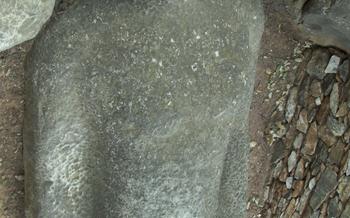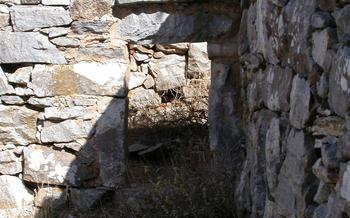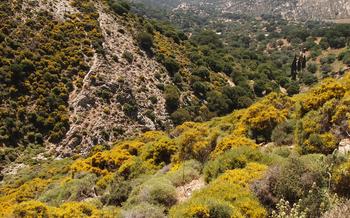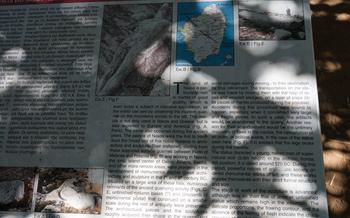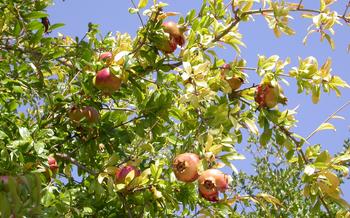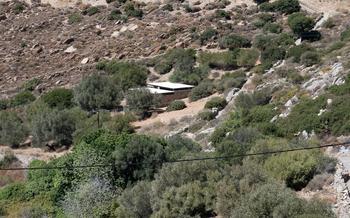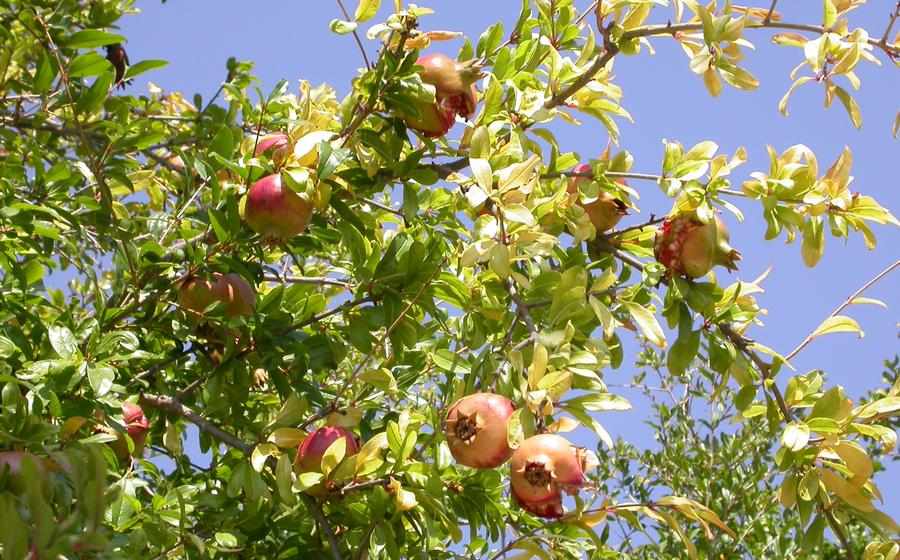
The Ancient Aqueduct in Melanes Village
- The Ancient Aqueduct in Melanes Village: A Testament to Engineering Brilliance
- Location and Accessibility
- Architectural Features
- Water Management System
- Restoration and Conservation
- Historical Significance
- Surrounding Landscape
- Nearby Attractions
- Photography Opportunities
- Visitor Facilities and Amenities
- Sustainable Tourism
- Local Cuisine and Dining
- Seasonal Considerations
The Ancient Aqueduct in Melanes Village: A Testament to Engineering Brilliance
In the heart of Naxos, the largest island in the Cyclades, lies the ancient aqueduct of Melanes Village, a remarkable feat of engineering that dates back to the Hellenistic period. Constructed around the 3rd century BC, this awe-inspiring structure stands as a testament to the ingenuity and advanced water management skills of the ancient Greeks. Its primary purpose was to transport water from the mountainous regions of Naxos to Chora, the main town of the island, ensuring a reliable water supply for its inhabitants.
The aqueduct's impressive arched structure, spanning over 3 kilometers, is a testament to the engineering prowess of the ancient Greeks. Constructed from locally sourced stone, the aqueduct features intricate details and architectural elements that showcase the skill and craftsmanship of its builders. Its arched design not only provided structural stability but also facilitated the efficient flow of water, ensuring a continuous supply to Chora.
Location and Accessibility
The ancient aqueduct in Melanes Village is conveniently located just a short distance from the main town of Naxos, Chora. To reach the site, visitors can either take a leisurely 30-minute walk along a scenic path that winds through the countryside, or drive for approximately 10 minutes. Public transportation is also available, with buses departing regularly from Chora to Melanes Village.
For those who prefer a more active mode of transportation, cycling is a great option. The route to the aqueduct is relatively flat and offers stunning views of the surrounding countryside. Once you arrive at the site, there is ample parking space available for visitors.
The best time to visit the ancient aqueduct is early morning or late afternoon when the sun is not as intense. This allows for more comfortable exploration and photography opportunities, as the soft light casts dramatic shadows that enhance the grandeur of the structure.
Architectural Features
The ancient aqueduct in Melanes Village stands as a testament to the remarkable engineering prowess of the ancient Greeks. Its unique architectural features are a blend of functionality and aesthetics. The aqueduct's most striking characteristic is its series of arches, which allowed water to flow smoothly and efficiently over uneven terrain. These arches were skillfully constructed using large stone blocks, demonstrating the precision and expertise of the ancient builders. The aqueduct's walls are made of thick, sturdy stones, ensuring its longevity and resistance to the elements. Intricate details, such as decorative moldings and carvings, adorn the structure, adding a touch of elegance to its overall appearance. These architectural elements not only contribute to the aqueduct's aesthetic appeal but also showcase the attention to detail and craftsmanship of the ancient Greeks.
Water Management System
The ancient Greeks demonstrated remarkable ingenuity in designing a sophisticated water management system that utilized the aqueduct as its centerpiece. The aqueduct's primary function was to transport water from the mountainous regions to Chora, the main town of Naxos. This water was collected from natural springs and channeled into the aqueduct through a series of strategically placed inlets.
Once inside the aqueduct, the water flowed through a gently sloping channel, guided by gravity. The aqueduct's arched structure not only provided structural stability but also facilitated the smooth flow of water. Along its course, the aqueduct featured several strategically placed reservoirs that served as storage facilities. These reservoirs ensured a continuous supply of water, even during periods of low rainfall or high demand.
The distribution of water from the aqueduct to various parts of Chora was meticulously planned. The water was released from the reservoirs through controlled outlets and directed into smaller channels or pipes that branched out across the town. This intricate network of channels ensured that every household and public fountain had access to a reliable supply of fresh water.
The engineering principles employed in the construction of the aqueduct were truly remarkable. The Greeks understood the importance of maintaining a constant flow rate and preventing water stagnation, which could lead to contamination. The aqueduct's design allowed for self-cleaning and ensured that the water remained fresh and pure throughout its journey from the mountains to the town.
Restoration and Conservation
The ancient aqueduct in Melanes Village has undergone extensive restoration and conservation efforts to preserve its historical significance and structural integrity. In the early 20th century, the aqueduct was in a state of disrepair, with many of its arches collapsed and its stonework eroded. Recognizing its cultural value, the Greek government initiated a comprehensive restoration project in the 1960s.
The restoration process involved meticulous cleaning and repair of the existing structure, using traditional techniques and materials to maintain its authenticity. Collapsed arches were rebuilt, damaged stonework was replaced, and the entire aqueduct was reinforced to ensure its stability. The restoration team also cleared vegetation and debris from around the aqueduct, improving its visibility and accessibility.
The challenges faced during the restoration process were significant. The aqueduct's remote location and the need to preserve its original features made it difficult to transport materials and equipment to the site. Additionally, the harsh climatic conditions, with strong winds and occasional earthquakes, required careful planning and engineering solutions to ensure the long-term durability of the restored structure.
Despite these challenges, the restoration project was a success, and the ancient aqueduct now stands as a testament to the dedication and expertise of the restoration team. The restored aqueduct not only serves as a reminder of the ingenuity of the ancient Greeks but also as a valuable cultural asset for the people of Naxos and visitors from around the world.
Historical Significance
The ancient aqueduct in Melanes Village stands as a testament to the advanced engineering skills and ingenuity of the ancient Greeks. Constructed during the Hellenistic period, it played a pivotal role in the development of water management systems and contributed significantly to the overall prosperity of Naxos. The aqueduct's innovative design allowed for the efficient transportation of water from the mountainous regions to Chora, ensuring a reliable water supply for the town's inhabitants.
The aqueduct also held cultural and social significance, impacting agriculture, trade, and daily life in ancient Naxos. By providing a steady water source, the aqueduct enabled the expansion of agricultural activities, leading to increased crop yields and economic growth. It facilitated trade by allowing merchants and travelers to access fresh water during their journeys, promoting commerce and cultural exchange. Moreover, the aqueduct's presence contributed to the overall quality of life, improving sanitation and hygiene practices, and enhancing the overall health and well-being of the population.
Surrounding Landscape
The ancient aqueduct in Melanes Village is not just a historical marvel but also a picturesque sight amidst the stunning natural beauty of Naxos. Nestled among lush greenery and rolling hills, the aqueduct offers panoramic views of the countryside and the Aegean Sea. Visitors can enjoy breathtaking vistas as they explore the site, capturing the essence of the island's natural charm. The surrounding landscape invites visitors to take a leisurely walk or hike in the nearby countryside, combining history and nature in a harmonious experience. The serene atmosphere and scenic surroundings make the ancient aqueduct an ideal spot for relaxation and contemplation, allowing visitors to connect with the tranquil beauty of Naxos.
Nearby Attractions
In addition to the ancient aqueduct, visitors to Melanes Village can explore several other nearby attractions that offer a glimpse into the rich history and culture of Naxos. The village itself is a charming destination, with its traditional Cycladic architecture, narrow streets, and whitewashed houses. Visitors can stroll through the village, admire the local craftsmanship, and sample the delicious local cuisine at one of the many tavernas.
Just a short drive from Melanes Village is the village of Chalki, known for its impressive Venetian castle. Built in the 13th century, the castle offers panoramic views of the surrounding countryside and the Aegean Sea. Visitors can explore the castle's ruins, wander through its courtyards, and learn about its fascinating history.
For those interested in history and archaeology, the Naxos Archaeological Museum in Chora is a must-visit. The museum houses a collection of artifacts from various periods of Naxos's history, including prehistoric tools, ancient pottery, and sculptures. Visitors can learn about the island's rich cultural heritage and gain a deeper understanding of its ancient past.
Other nearby attractions include the Temple of Demeter, located near the village of Sangri, and the Kouros of Melanes, a large unfinished statue of a young man that dates back to the 6th century BC. These sites offer visitors a glimpse into the ancient world and provide a deeper appreciation for the rich history of Naxos.
Photography Opportunities
The ancient aqueduct in Melanes Village presents a feast for the eyes of photography enthusiasts. Its picturesque setting, amidst rolling hills and lush greenery, creates a captivating backdrop for capturing stunning photographs. The intricate details of the aqueduct's arched structure, combined with the natural beauty of its surroundings, make it a photographer's paradise.
Experiment with different angles and perspectives to capture unique shots that showcase the grandeur of the aqueduct. Photograph the towering arches against the backdrop of the clear blue sky or capture the play of light and shadow as the sun casts long shadows across the structure.
For the most dramatic shots, visit the aqueduct during the golden hours of early morning or late afternoon. The warm, diffused light during these times creates a magical atmosphere, adding depth and dimension to your photographs.
Whether you're a seasoned professional or an amateur photographer, the ancient aqueduct in Melanes Village offers endless opportunities to capture breathtaking images that will serve as lasting mementos of your trip to Naxos.
Visitor Facilities and Amenities
The ancient aqueduct in Melanes Village is a well-maintained historical site that offers basic amenities to enhance the visitor experience. Adequate parking is available for both cars and buses, ensuring convenient access for those arriving by vehicle. For the comfort of visitors, restrooms are located near the entrance of the site, providing basic facilities for all. Guided tours are available upon request, offering insightful commentary and historical context to help visitors fully appreciate the significance of the aqueduct. The site is generally accessible for visitors with disabilities, although some areas may require assistance due to uneven terrain. Admission to the aqueduct is free of charge, allowing everyone to enjoy this historical wonder without any financial barriers.
Sustainable Tourism
When visiting the ancient aqueduct in Melanes Village, it is crucial to embrace sustainable tourism practices to protect the environment and preserve the cultural heritage of the site for future generations. Visitors should stay on designated paths to avoid damaging the surrounding vegetation and archaeological remains. Littering should be strictly avoided to maintain the cleanliness and beauty of the area. Respecting the privacy of local residents is essential, as the aqueduct is located in a residential area. Supporting local businesses and initiatives that contribute to the sustainable development of the region is highly recommended. This can include purchasing souvenirs from local artisans, dining at traditional tavernas, or participating in guided tours conducted by knowledgeable locals. By embracing sustainable tourism, visitors can help ensure that the ancient aqueduct and its surroundings remain a cherished heritage for years to come.
Local Cuisine and Dining
After exploring the ancient aqueduct, take a break to savor the culinary delights of Naxos at one of the nearby tavernas. Indulge in traditional Greek dishes prepared with fresh, local ingredients, such as Naxian potatoes, a unique variety known for its distinct flavor. Sample xinomyzithra, a tangy cheese made from sheep's or goat's milk, often used in local salads and pastries. And don't forget to try Kitron, a refreshing liqueur made from the aromatic citron fruit, a specialty of Naxos. Whether you choose to dine at a traditional taverna in the village of Melanes or enjoy a meal with a view of the aqueduct, the local cuisine will undoubtedly enhance your experience and provide a taste of the authentic Naxian culture.
Seasonal Considerations
When planning a visit to the ancient aqueduct in Melanes Village, it is essential to consider seasonal factors to ensure a comfortable and enjoyable experience. The best time to visit Naxos is during the shoulder seasons, spring (April-May) and autumn (September-October), when the weather is pleasant, with warm days and cool nights. During these months, the crowds are smaller, and visitors can avoid the intense heat and humidity of the summer months.
In the summer (June-August), temperatures can soar, making it uncomfortable to explore the aqueduct under the scorching sun. However, if visiting during this period is unavoidable, it is advisable to plan early morning or late afternoon visits to avoid the hottest part of the day. Additionally, carrying water, wearing sunscreen, and seeking shade whenever possible is essential.
The winter season (November-March) in Naxos is mild, with occasional rainfall. While the weather may not be ideal for swimming or sunbathing, it is still a suitable time to visit the aqueduct, as the reduced crowds offer a more intimate and tranquil experience. Visitors should dress warmly and be prepared for occasional showers.

